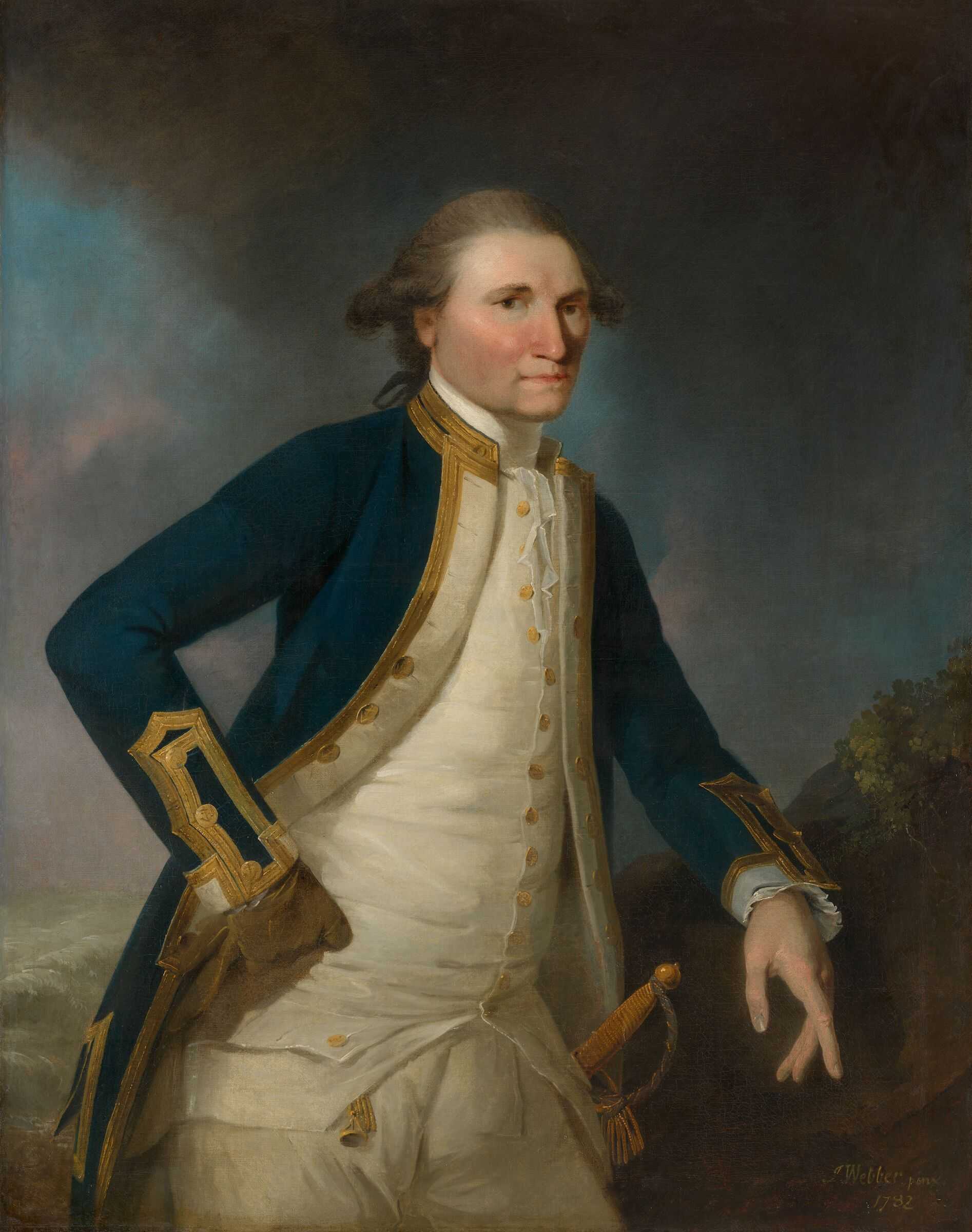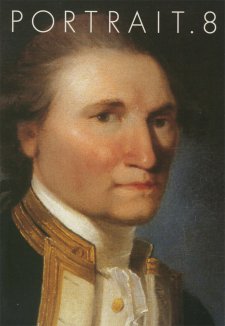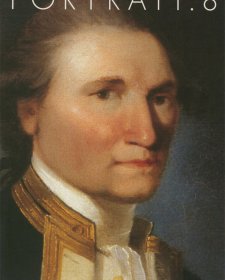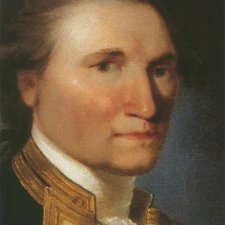Cook as Webber knew him
James Cook (1728-1779) was one of the greatest of all maritime explorers. In three prodigious voyages to the Pacific over a space of just eleven years, he opened up vast areas that had been only tentatively investigated before, and charted them with exceptional accuracy. He circumnavigated and mapped New Zealand, surveyed and claimed the east coast of Australia, explored the continent of Antarctica, visited Tahiti and disclosed numerous island groups. As a result of measures he took to raise standards of hygiene and nutrition on board his ships, there was an appreciable improvement in the health of future British seamen. Cook's voyages coincided with the proliferation of new types of publishing enterprise in Britain and Europe throughout the eighteenth century, and his progress and adventures were reported to an avid public almost as they took place.
John Webber RA (c.1752-1793) was the official painter on Cook's third and last voyage of 1776-1780, and it is mostly through his connection with Cook that he is known as a draughtsman and watercolourist. He was born in London, the son of a Swiss sculptor, and was apprenticed in 1767 to one of the foremost Swiss landscape artists, Johann Aberli. After three years' training with Aberli, he continued his studies at the Académie Royale in Paris, making many sketches of rural landscape and learning to paint in oils. In Paris Webber's talent and good manners were noticed, and his early portraits were characteristically intimate and kind. He returned to London at 24, and was admitted to study at the Royal Academy, where he first exhibited in 1776. Dr Daniel Solander, the Swedish naturalist who sailed with the first voyage with Cook and Banks, saw and admired Webber's works at this first exhibition; knowing that no artist had been appointed for the voyage of the Resolution, he recommended Webber. The young man was appointed by the Admiralty on June 24 and joined the Resolution at Plymouth on July 5, sailing a week later.
It was Webber's job to make drawings and paintings of people and objects encountered on the journey; to 'observe the genius, temper, disposition and number of the natives ... shewing them every kind of civility and regard.' On this voyage first contact was established with Hawaiian and British Columbian indigenous people, and the crew were amongst the first Europeans to meet the original inhabitants of Alaska and Kamchatka. The illustrations he provided for the three-volume set of the official record of the voyage contributed to its immediate commercial success.
After he returned to London Webber exhibited paintings and drawings relating to the Resolution expedition at the Royal Academy, and over the ensuing years he made a modest income from reworking drawings for sale on commission. He was often visited by people keen to hear tales of the voyage, and see the drawings and the curiosities he had amassed. The diarist and novelist Frances Burney, for example, records her delight with Webber's portraits of the native inhabitants of New Zealand, Kamchatka, New Amsterdam and China. Apart from his connection with Cook, throughout his working life Webber was best known for his landscapes, deemed 'excellent pictures' by the great painter Sir Joshua Reynolds. However, he continued to produce portraits until the time of his death.
Webber's 1782 portrait is one of five known surviving portraits of Cook painted in the eighteenth century, and until it was acquired by the National Portrait Gallery, it was the only one outside a major gallery or museum. Webber painted Cook three times from life, twice in 1776 and once in 1777. The first two paintings are in the National Portrait Gallery, London, and the Museum of New Zealand, Te Papa Tongarewa, Wellington. The third, painted in Tahiti, was given by Cook to his friend Chief Tu (Otoo) and has since disappeared.
Cook was killed in an affray with indigenous Hawaiians in Kealakekua Bay during his third voyage, on 14 February 1779. Whether Webber witnessed Cook's death is unknown, although his drawings, subsequently copied by engravers, have significantly influenced historical interpretations of the event. It is self-evident, however, that his 1782 portrait of Cook was painted from memory. It is likely that Webber, having spent three years with Cook on his troubled final voyage, respected his captain's instinctively humane and disciplined approach to seafaring. So his final portrait eschews the severe representation of the earlier, better known image by Nathaniel Dance, managing to emphasise the subject's willpower, but also to gesture at his leniency and integrity. Quite apart from the eminence of its subject, the painting finely incorporates the characteristic elements of eighteenth century portraiture; sweep, amplitude, and gesture are employed to reflect the sitter's character, vision and determination. The long torso was also something of a convention of portraiture of the time, although Cook was more than 180cm tall. Landscape settings, too, were common in eighteenth century portraits, but the stormy background in the Cook portrait has particular resonance, reminding us that the brave sailor lived and died trying to disclose the potential of the sea and the sky to the wider world.








